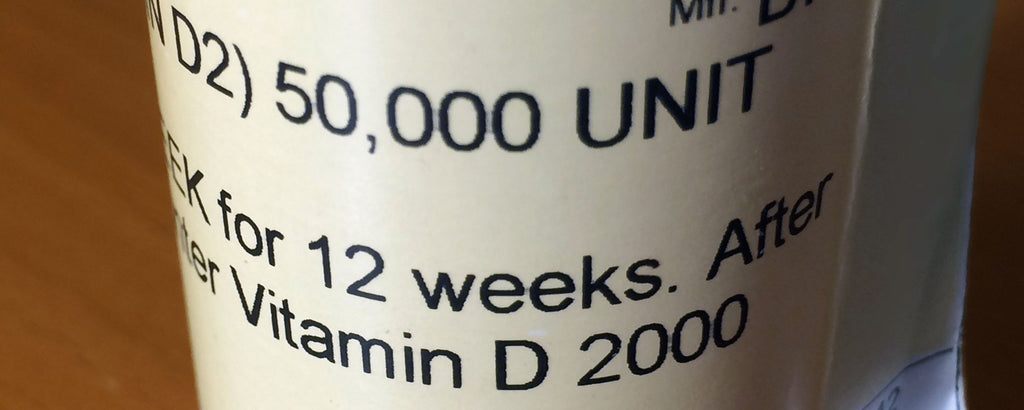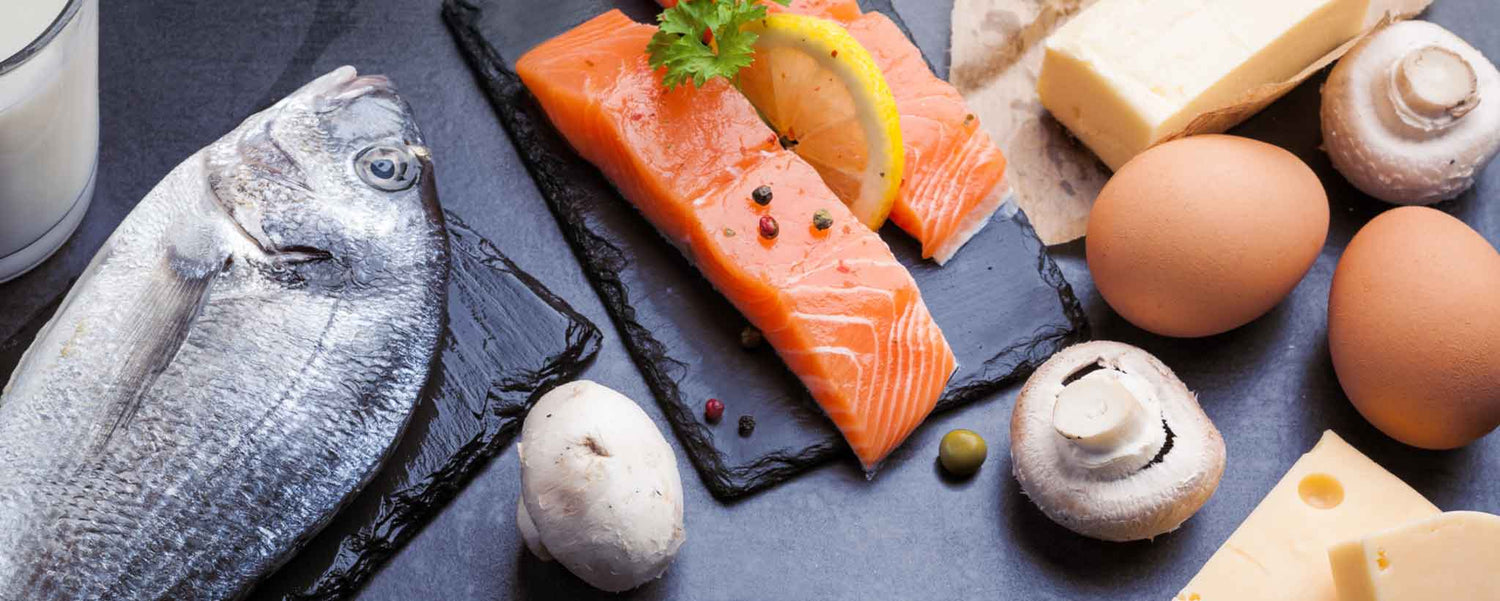Chronic pain, erectile dysfunction, and obesity can all be caused by insufficient vitamin D.
Prevent Vitamin D Deficiency
An estimated 1 billion people are vitamin D deficient. Just how much vitamin D is required? It seems like a simple question but few among the population know the answer. This is largely because professional guidelines for nutrition vary. Hence, doctors practicing at different facilities have inconsistent recommendations.
Measuring Vitamin D
There is a difference between the recommended daily allowance (RDA) and the optimum level found within our blood stream. Vitamin D RDA is 400–800 IU/day, or 10–20 micrograms. However, some studies suggest that a higher daily intake of 1000–4000 IU (25–100 micrograms) maintains optimal blood levels.
Labs use one of two measuring standards so 40–80 ng/mL is equivalent to 100–200 nmol/L. Some say normal range within the blood stream is 40–80 nanograms per milliliter (ng\mL). Other experts say 20 ng/mL (50 nmol/L) is sufficient.
In the New England Journal of Medicine, several of the leading epidemiologists and endocrinologists who were on the original Institute of Medicine (IOM) committee now say deficiency is evident below 12.5 ng/mL (31 nmol/L). This affects about 6% of Americans.
Still others debate the significance of vitamin D in overall health. This article sifts through the debate to extract useful information from several notable sources.
There are two forms of vitamin D: D2 and D3. Vitamin D2 (ergocalciferol) comes from fortified foods, plant foods, and supplements. Vitamin D3 (cholecalciferol) is derived from fortified foods, animal foods, supplements, and can be internally generated when exposing skin to ultraviolet (UV) radiation from the sun.
Because malabsorption can hinder supplementation, it is wise to establish gut health while testing vitamin D levels.
Vitamin D Sources
Fatty fish and sunlight are the two most abundant sources of natural vitamin D. Going beyond these, there is a sharp decline. In North America, milk (dairy), some milk substitutes, breakfast cereals, and some orange juices are fortified with vitamin D. The larger population of the earth are more reliant upon non-fortified nutrition and sunlight.
High Sources of Vitamin D
- Salmon
- Sardines
- Cod liver oil
- Mackerel
- Canned tuna
- Oysters
- Shrimp
- Egg yolks
- Liver
- Mushrooms
- Tofu (fortified)
- Cheese
Nutritional amount varies according to quality of food, portion size, and preparation method.
Who Is At Risk?
Given, the number of animal sources, vegans and people who are lactose intolerant are likely to have low levels of vitamin D within their blood. Since melanin blocks UV rays, dark-skin people, those who cover themselves with sunscreen, or those housebound do not absorb much vitamin D from the sun.
Lupus patients are photosensitive so are at risk for deficiency. Children with type 1 diabetes have a higher incidence of vitamin D deficiency than the general population.
There are so many self-imposed food restrictions that many people are malnourished.
Vitamin D deficiency is common in patients with Alzheimer’s disease, Parkinson’s disease, schizophrenia, depression, anxiety disorders, and dementia. Also included are people with anorexia nervosa, people who have had gastric bypass surgeries, or who suffer from other malabsorption syndromes like celiac sprue.
Perimenopausal women, people diagnosed with osteopenia (reduced bone density, but not osteoporosis) and osteoporosis, or other skeletal disorders, as well as pregnant and lactating women should have vitamin D blood levels screened.
Low or High Vitamin D Symptoms
How do you know if your vitamin D is too low? When deficient, the following symptoms may be evident:
Vitamin D Deficiency Symptoms
- Chronic bone pain
- Depression
- Frequent sickness
- Fatigue
- Fragile bones
- Gut issues
- Hair loss
- Head sweating
- Slow healing wounds
- Weakness
Rickets is a bone disorder caused by a deficiency of vitamin D, calcium, or phosphate. Deficiency can lead to osteomalacia, a disease that leads to multiple bone fractures. Vitamin D also helps regulate weight. Healthy vitamin-D blood levels can reduce the formation of fat cells throughout the body.
Subjects of a pilot study with vitamin D deficiency in men obtained lower scores for erectile function, orgasmic function, and sexual desire. In a separate study, vitamin D improved sexual desire in women with both vitamin D deficiency and vitamin D insufficiency.
Going to the other extreme for a moment, vitamin D toxicity is possible, rare though it may be. It can occur when levels in blood rise above 150 ng/mL (375 nmol/L). This could cause kidney malfunction, gastrointestinal problems, fatigue, and confusion. So patients are not advised to take high doses for longer than prescribed.
Low Vitamin D Treatment
While we know vitamin D levels can be too low or high, consensus on these two thresholds is subject to interpretation by the treating physician. It is generally safe to say that 12 ng/mL (30 nmol/L) and below requires intervention.
With some latitude, most doctors are satisfied with a patient’s range between 20–40 ng/mL (50–100 nmol/L), though the higher range is probably better.

To correct extremely low levels of vitamin D, doctors prescribe short-term high doses of the vitamin.
The clothing we wear, local weather, pollution, sunscreen use, weight, and genetics may affect our body’s ability to absorb and produce vitamin D. Assuming there are no malabsorption issues, you can restore proper nutrition with prescription-strength supplements.
It is generally safe to say that 12 ng/mL (30 nmol/L) and below requires intervention.
The American agricultural society declined during the first quarter of the twentieth century. Today, most people are not farmers. Healthy eating was first replaced by the convenience of canned food. Today, fast junk food abounds. In an attempt to remain healthy, people impose many consequential food restrictions and dining habits.
Among the self-imposed dietary restrictions are ketone diets, carbohydrate-free diets, veganism, and medically prescribed gluten-free or egg-deficient diets. So malnutrition in varying degrees is more common. This can contribute to vitamin D deficiency.
If your vitamin D level concerns you, speak to your doctor. A blood test called the 25(OH)D (25-hydroxy vitamin D) can determine if it is an issue. A treatment plan to help you feel healthier follows. Then strive to improve nutrition with non-processed foods.
To support the writing of useful articles about nutrition, ClinicalPosters sells human anatomy charts, scientific posters, and other products online. You may sponsor specific articles, become a ClinicalNovellas Member, or remit a small donation.
ClinicalPosters sells human anatomy charts, scientific posters, and other products online to offset expense of the writing useful articles about nutrition. Slide extra posters into DeuPair Frames without removing from the wall.
Show your support by donating, shopping for ClinicalPins, becoming a ClinicalNovellas Member, or leaving an encouraging comment to keep the research going.
To support the writing of useful articles about nutrition, ClinicalPosters sells human anatomy charts, scientific posters, and other products online. You may sponsor specific articles or remit a small donation.
ClinicalPosters sells human anatomy charts, scientific posters, and other products online to offset expense of the writing useful articles about nutrition. Slide extra posters into DeuPair Frames without removing from the wall.
ClinicalPosters sells human anatomy charts, scientific posters, and other products online. You may remit a small donation or become a ClinicalNovellas Member.
You can support the writing of scholarly articles about nutrition by sponsoring specific articles, becoming a ClinicalNovellas Member, or remitting a small donation. Visible content is optimized for device size.







 Romance & Health Intertwine. Fall in love with a captivating romance miniseries that explores the essence of well-being. Become a ClinicalNovellas member for heartwarming tales.
Romance & Health Intertwine. Fall in love with a captivating romance miniseries that explores the essence of well-being. Become a ClinicalNovellas member for heartwarming tales.





